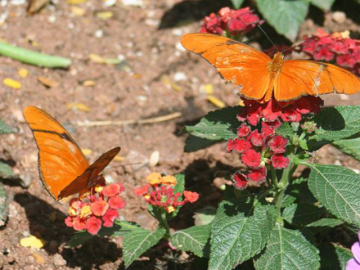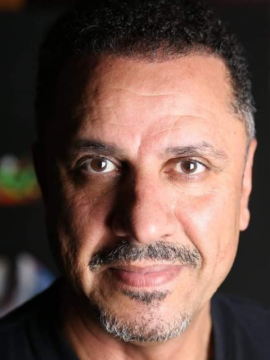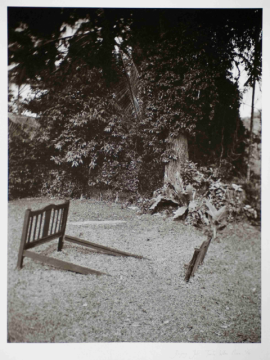Far-Flung: This is Nsenene Season
Eva Clifford
After the rain season in Uganda, a frenzy of green descends on towns and cities across the country, heralding the start of another season. During this time, masses of people join the informal trade of grasshopper trapping, staying up till dawn to hunt and sell the insects – both a delicacy and source of income for many Ugandans. This is nsenene season.
In 2011, Italian photographer Michele Sibiloni was riding a night bus in Masaka (80 miles / 130 km southwest of Uganda’s capital of Kampala), when he saw the nsenene traps for the first time. Just like the grasshoppers, it was the light that attracted Michele: the way the landscape was transformed by the glare of the trap lights, bathing the entire town in a supernatural green. “I was mesmerised,” he recalls.
Based in Kampala since 2010, Michele has travelled across the African continent covering news events such as the South Sudan independence, the Arab Spring revolutions, the M23 rebellion in DRC, and the attempted coup in Burundi. But it’s his documentation of nightlife – particularly his wild, unfiltered glimpse into the Ugandan club scene – that he is perhaps best known for.
After years photographing in the city, Michele was keen to venture out into the countryside and the nsenene harvest offered a perfect opportunity to combine that wish with his enduring fascination for the night. In 2014, he began travelling up and down the country exploring the industry, meeting with trappers and discovering far more beyond the simple visual appeal.
“When I was a kid, nsenene season was the only time I was allowed out at night, under the pretext of catching grasshoppers,” writes Ugandan music artist and politician Bobi Wine in the book’s preface. “If you got home late with at least a handful of them, you’d be sure not to get a beating from your parents, because they could see you’d been doing something worthwhile.
“… While older and wealthier people were sitting at home eating dinner, we were out in the open, hunting. The darker it got, the brighter the lights shone and the more insects came. Venturing out into that uncertain night, we witnessed amazing miracles.”
Bobi was in his teens when he realised the money-making potential of grasshopper hunting. “In my youth, grasshoppers smelled good because it was the smell of success,” he says. “In fact, I recorded my first single – and made my first million – with grasshopper money. It paid for my brother’s school fees and the family’s bills, too. This is why I revere these insects: grasshoppers have changed my life.”
Despite its increasing profitability, not everyone has such success stories. For all its rewards, the industry carries just as many risks, and people regularly lose out after their investments. In recent years, the number of insects has also fallen sharply – partly due to deforestation – and climate change has made seasonal rains difficult to predict, which is problematic in an industry that relies on good timing. The nsenene migrate en masse twice a year, usually after the bi-annual rain season; this is when the trappers know to watch out and brace for the oncoming swarm, but the catch is that now nobody knows exactly when they are coming.
“Most of the nights are about waiting, hoping that the swarm will come,” explains Michele. “Sometimes it does but it can last a short time. A bit of wind could be enough to blow them away. Every day the topic is if it could be a good night. It is difficult to be in the right place at the right time, and this is one of the reasons why it took me years to have a good number of images at different stages.
“When a big swarm comes it is difficult to describe what it’s like, but it’s a unique experience. The sky turns green, people get extremely busy inside the traps and in the street catching the crickets, while others are just taking images with their phones. Everyone is happy, money is going to be made and the worries of losing the money invested vanishes. For 2-3 days it is like that. And then the competition among trappers starts.”
Though many people catch the hoppers with their bare hands, the most prevalent – and most profitable – method of trapping involves using elaborate structures consisting of metal drums, corrugated zinc sheets and high-wattage lights. For maximum effect, many trappers remove the external bulb to lure more insects. But the intensity of the rays is damaging to human eyes and skin, meaning it’s vital to wear protective gear.
“Fires are also made so the smoke can create a white nebula that helps disorientate the grasshoppers,” says Michele. “Once the insect reaches the trapping site, they hit the metal sheets and fall into the drums from which they cannot escape.”
In the early hours they get collected, put in sacks and rushed to the main market in Kampala where they get sold alive. Brokers set the prices according to the quantity of insects caught around the country. An average cost for a few teaspoons of nsenene (once spiced and fried) is around 1,000 Ugandan shillings (approx. 20 pence).
Given their high protein content, grasshoppers have been cited as a possible food resource for the future. According to the UN’s Food and Agriculture Programme, introducing edible insects into more peoples diets could reduce world hunger and improve food safety. In recent years however, declining numbers of grasshoppers have created yet more uncertainty. As deforestation causes a rapid loss of their natural habitat, climate change is making rainy seasons more unpredictable, disturbing the nsenene’s life cycles and disorientating the swarms.
“This year it has been raining for two months, even if the official rainy season is supposed to be next month. We get confused, the hoppers get confused, the trappers get confused and everyone ends up exasperated as a result,” says Bobi.
This relationship between man and nature was an important topic for Michele. At the same time he was making the project, the Ebola crisis happened just 70 km to the other side of the border from where he was. Later, northern Kenya was hit by a locust invasion, shortly followed by eastern Uganda, and then the covid-19 pandemic hit – all of which made him even more conscious of the underlying links between these issues.
“Several of those disasters are connected with the relationship between man and nature and the extent humans have gone to exploit nature in order to survive,” says Michele. “During the trapping, grasshoppers are caught but also several other insects important for the ecosystem. Overtrapping is also a problem, but because the country has about 80% of unemployment, any possibility to make a living is taken avidly.”
Michele’s Nsenene images read like a dream sequence: emerald mist rising from a barricade of metal, a full moon suspended in the night sky and two faceless figures in a tree that resembles the bronchi of the lungs. But within each of them lies an important message about our present reality, a vivid example of how the delicate balance of nature can be easily tipped with consequences for us all.


